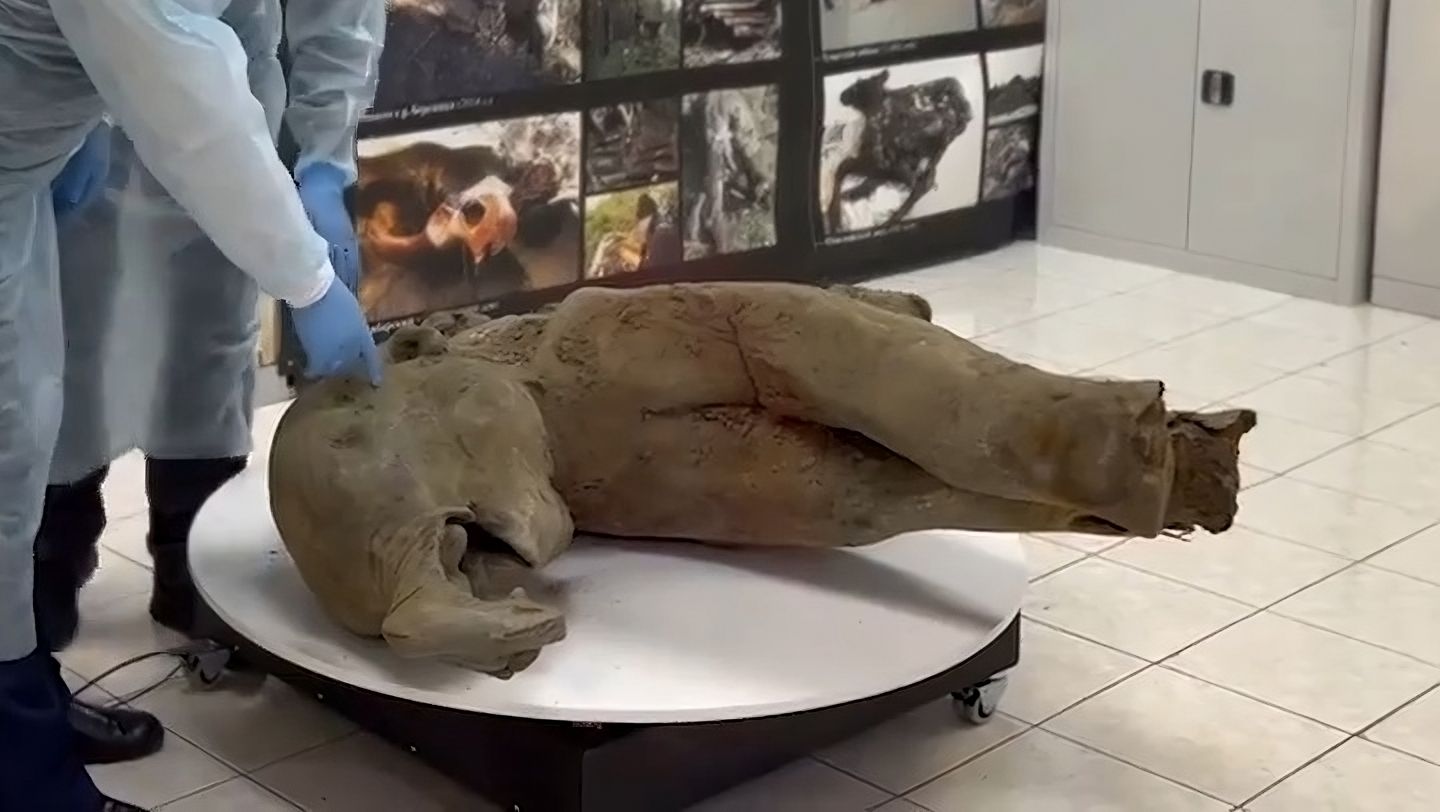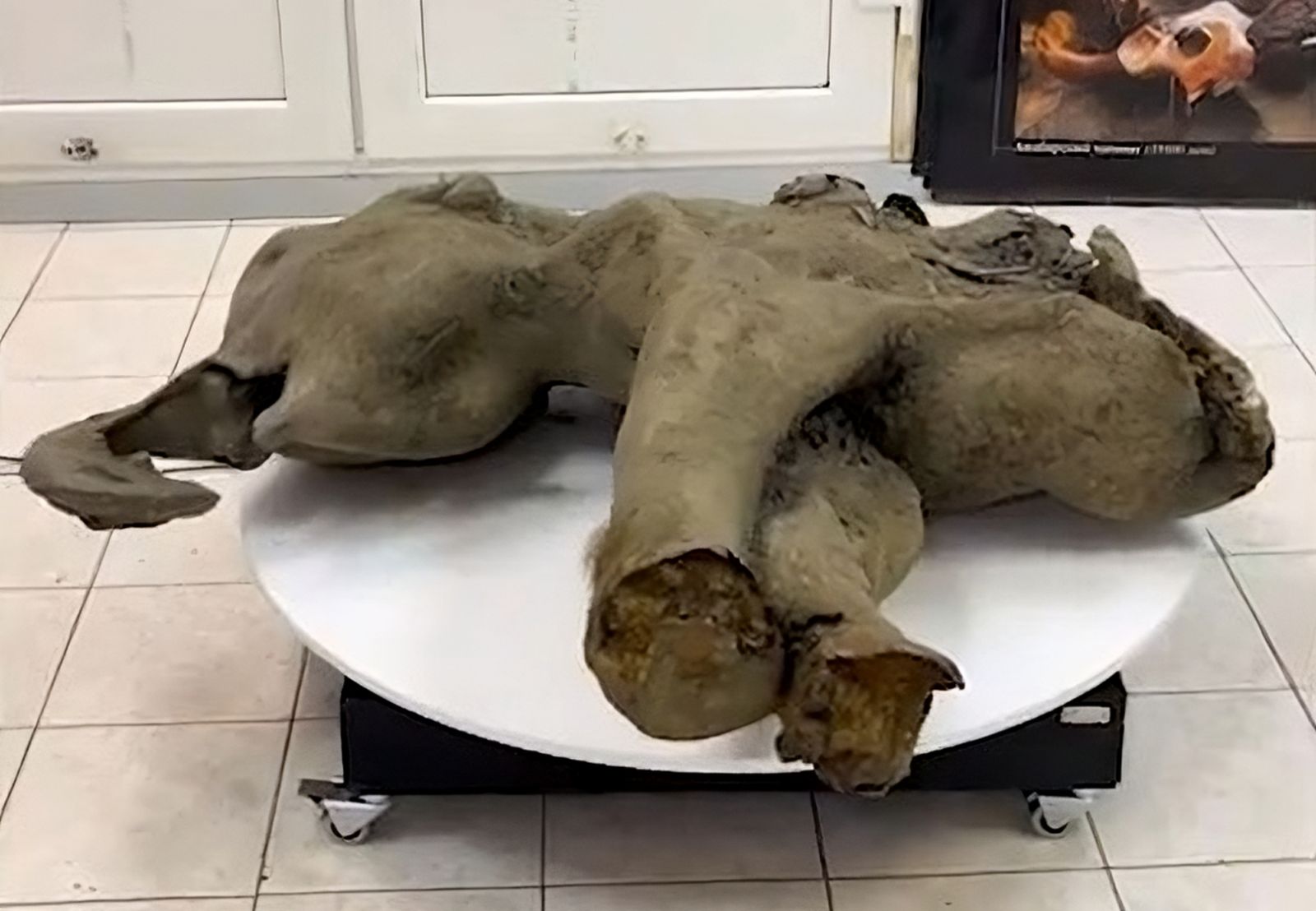Discovery of a 50,000-year-old mammoth in excellent condition ⛏️
Published by Cédric,
Author of the article: Cédric DEPOND
Source: The Moscow Times
Other Languages: FR, DE, ES, PT
Author of the article: Cédric DEPOND
Source: The Moscow Times
Other Languages: FR, DE, ES, PT
Follow us on Google News (click on ☆)

Extract from the video source
Discovered near the Yana River, in Yakutia, this small female mammoth, nicknamed Yana, lived approximately 50,000 years ago. The permafrost, a permanently frozen layer of soil, preserved her body exceptionally well, offering researchers a genuine time capsule.
Yana's dimensions reveal her young age: 47 inches tall (120 cm), 79 inches long (200 cm), and weighing 397 pounds (180 kg). Preliminary analyses suggest she was a little over one year old when she died. Her intact tissues and fur allow for groundbreaking biological studies of these extinct giants.
The remarkable condition of this specimen has astonished scientists. According to Anatoli Nikolaev, rector of the North-Eastern Federal University, no mammoth has ever been found with such an impeccable state of preservation of internal organs and limbs. This opens new perspectives for paleontology.
The Batagaika region, where Yana was discovered, is already renowned for its prehistoric remains. Along with the mammoth, remains of horses, bison, and lemmings have been unearthed, illustrating the biodiversity of the last ice age. These findings are crucial for understanding ancient ecosystems.

Extract from the video source
Researchers are also hoping to decipher clues about the climatic conditions that enabled such preservation. The role of Siberian permafrost, comparable to a massive natural freezer, is central in preserving fossils for millennia.
Beyond tissue analysis, this carcass could impact genetic research. Yana's potentially complete DNA could allow comparisons of her genome with that of modern elephants, her cousins. The implications might even extend to hypotheses about the possible "resurrection" of mammoths.
Finally, this discovery raises questions about environmental changes. As climate change thaws these millennia-old soils, it reveals buried treasures while also accelerating their degradation. Yana could be one of the last specimens to be found in such perfect condition.